By Peggy Post & Cindy Post Senning, Ed.D.
W HY M ANNERS ?
B ack in eighteenth-century France, King Louis XIV used to invite people to his palace for parties and festivals. However, he became really upset when people walked all over the lawns and gardens, squishing the grass and stomping on flowers. So before the next party, he called in his gardener to talk about this problem. They decided to put up little signs everywhere saying: Please dont walk on the flowers! Stay on the path. Be careful of the roses. The signs guided the guests so they would know where it was okay to walk and where it wasnt. The word in French for the little signs was etiquette. Over time the word etiquette came to mean all the little signs that help us know what to do in new and different situations. And, in even more time, etiquette came to mean all the things we do to help us get along better with those we meet in our daily lives.

Today the little signs make up the set of manners we think of as etiquette. They say things such as, Say please and thank you. Take off your hat when you come to the table, please. Dont read your sisters mail. Please help clear the table. When your friends come over, remember to introduce them to your parents. Etiquette, or manners, guide you through all of your activities. Each little sign is like a tool to help you get along. And just as with all tools, you need to learn how to use them. It takes practice, practice, practice.
This book is for you. It will tell you the manners you need to know and how to use them. It will tell you about manners for
 Getting along with others. Manners are an essential ingredient in the glue that holds families together. Youll discover manners that will strengthen your relationships not only with your family but also with friends, teachers, and the other people you meet every day.
Getting along with others. Manners are an essential ingredient in the glue that holds families together. Youll discover manners that will strengthen your relationships not only with your family but also with friends, teachers, and the other people you meet every day.
 Helping you get through the day more easily wherever you are. Youll learn about manners that will guide you through the mall and your school, on planes or trains, at parties, in a taxi, during a hospital visit, or at a service in a church or synagogue.
Helping you get through the day more easily wherever you are. Youll learn about manners that will guide you through the mall and your school, on planes or trains, at parties, in a taxi, during a hospital visit, or at a service in a church or synagogue.
 Knowing what to expect in new and different situations. If youre invited to be in a wedding or to go to a bar mitzvah, youll find the manners that will help you know how to act and what to expect.
Knowing what to expect in new and different situations. If youre invited to be in a wedding or to go to a bar mitzvah, youll find the manners that will help you know how to act and what to expect.
What happens when it seems the manners you know dont fit a specific situation? Or maybe its impossible to learn all the manners necessary and youre in a situation where you dont know what to do. All you need to do is apply some basic ideas. Ask yourself how you can be respectful, considerate, and honest. In most situations, just think about how you would like to be treated, and youll have the answer you need! Or, maybe, you can find the answer by asking someone else.
Three principles are the basis of all the manners in this book:
 Respect means caring for and understanding others just as they aretheir culture, their habits, and their strengths and weaknesses. Showing respect means acting toward people with care and understanding for them.
Respect means caring for and understanding others just as they aretheir culture, their habits, and their strengths and weaknesses. Showing respect means acting toward people with care and understanding for them.
 Consideration just means thinking about other people. Its thinking about how what you are doing will affect them.
Consideration just means thinking about other people. Its thinking about how what you are doing will affect them.
 Honesty is more than just not telling lies. It is finding the truth and then telling it. And if the truth might be hurtful, its finding a way to put the truth in a positive light. When your mother asks, Dont you like the carrots? instead of saying, They are yucky! which might be the truth, you could say, Carrots arent my favorite vegetable, but the chicken was great!also the truth.
Honesty is more than just not telling lies. It is finding the truth and then telling it. And if the truth might be hurtful, its finding a way to put the truth in a positive light. When your mother asks, Dont you like the carrots? instead of saying, They are yucky! which might be the truth, you could say, Carrots arent my favorite vegetable, but the chicken was great!also the truth.
No matter what the situation is or where you find yourself, if you choose to act with respect, consideration, and honesty you will do well. Your relationships with your family and friends will be better. And while sometimes being considerate, respectful, or honest seems as if it just benefits the other person, it will benefit you, too. You will feel better about yourself just for helping someone else have a better day or treating them the way you would want to be treated.
Learn to use the manners in this book and you will have the tools you need to get through difficult situations more easily. Youll know what to expect in so many more situations, and youll have more confidence for facing new ones. Take advantage of this gift of good manners and you will develop a sense of self-respect and self-confidence that will make your day and the day of everyone around you just a little bit better.
EVERYDAY LIFE
The way you use words has an effect on every relationship you have.
P erhaps you are the quiet type. Or maybe you like to talk a lot. In either case, the way you use words will affect how well you get along with your friends and family. You dont have to be great at talking with people, but you do have to choose your words carefully to smooth your way. Whether youre talking to your grandparents or your best friendwhether it is one word or hours of conversationyour choice of words, your ability to string them together effectively, and your use of your vocabulary will make all the difference in your relationships.

Great conversations require more than choosing the right words. Your facial expressions and body language play a big part, too. If you are feeling good about what you are saying, make sure you have a smile on your face. If you are serious about the conversation, dont shrug or appear bored. If the topic is a sad one, dont pepper your conversation with giggles. A carefully timed eye roll or a drawn out Excuuuse me can change the whole meaning of a conversationand not always for the better.
B ASIC M ANNERS
Beyond the Magic Words
CONSIDER THIS : Youre walking down a crowded hallway in school and someone crashes into you. He or she may grunt and move on or may say, Excuse meare you okay? Wouldnt excuse me make you feel better? If you already have please and thank you down pat, its time to add several new magic words to your manners vocabulary:
 Youre welcome is the third in the trio of classic magic words.
Youre welcome is the third in the trio of classic magic words.
 Excuse me can be used in many situations, including bumping into someone or interrupting. It shows consideration, no matter what the situation.
Excuse me can be used in many situations, including bumping into someone or interrupting. It shows consideration, no matter what the situation.
 No, thank you is a great improvement over a solitary No or Eew, I dont like that stuff!
No, thank you is a great improvement over a solitary No or Eew, I dont like that stuff!
 Hi, how are you? is a friendly greeting that will start things off on the right foot. (And a quick reply of Fine, thanks. How are you? will keep the conversation going.)
Hi, how are you? is a friendly greeting that will start things off on the right foot. (And a quick reply of Fine, thanks. How are you? will keep the conversation going.)



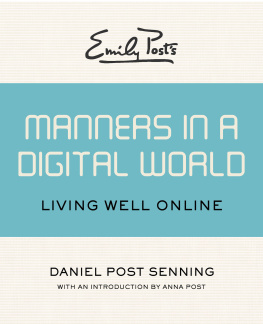
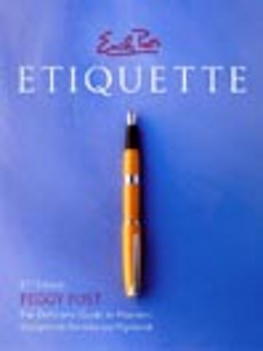
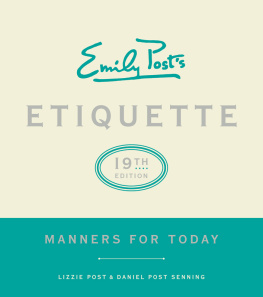
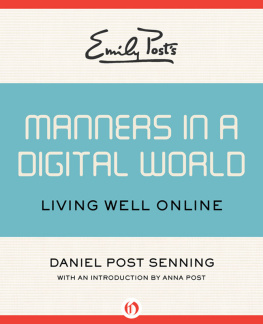



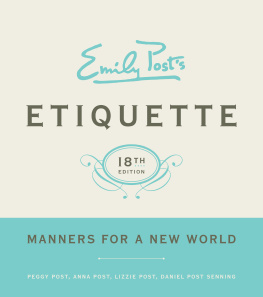



 Getting along with others. Manners are an essential ingredient in the glue that holds families together. Youll discover manners that will strengthen your relationships not only with your family but also with friends, teachers, and the other people you meet every day.
Getting along with others. Manners are an essential ingredient in the glue that holds families together. Youll discover manners that will strengthen your relationships not only with your family but also with friends, teachers, and the other people you meet every day.